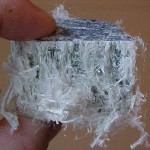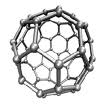 Many of the posts on this blog have addressed the regulation dilemma of whether to incorporate nanomaterials into the existing regulatory framework or develop separate regulations to manage their potential hazards. This same dilemma is playing out in a slightly different way through a public-private partnership on exposures to carbon nanotubes in consumer products.
Many of the posts on this blog have addressed the regulation dilemma of whether to incorporate nanomaterials into the existing regulatory framework or develop separate regulations to manage their potential hazards. This same dilemma is playing out in a slightly different way through a public-private partnership on exposures to carbon nanotubes in consumer products.
The NanoRelease project is engaged in this effort, with the support of numerous organizations, including U.S. EPA, Environment Canada, HealthCanada, and the American Chemistry Council. Undertaken by the Government of Canada, the project has selected multi-walled carbon nanotubes in polymer to begin its study of the nature of exposures to nanomaterials. The study includes determining likely release scenarios, evaluating release measurements, and considering needs for laboratory testing. The research foundation has stated: “The NanoRelease project will foster the safe development of nanomaterials by supporting development of methods to understand the release of nanomaterials used in products.” Among other things, the group pledges to develop a “state of the science” report.
A summary of the project is available at
www.ilsi.org/ResearchFoundation/Documents/NR%20Orientation%20Powerpoint%20Presentation.pdf
Both the National Institute of Occupational Safety and Health (NIOSH) and the Consumer Product Safety Commission (CPSC) are very interested in the ongoing process. But will the ultimate result be “consensus standards” for nanomaterials that are efficient and effective? Will consensus standards be followed by industry without a direct mandate?
Bloomberg BNA’s Daily Environment Reporter quoted John Howard, the director of NIOSH, as saying: “We want to make sure that if we are developing consensus standards . . . that people are reading them and that people are adhering to them. Otherwise heavy-handed government regulation – that industry always objects to – will come into fore and then we’ll have a less effective control system, a less efficient risk management system.” (quoted in Pat Rizzuto, Regulators, Industry Sorting Through Potential Exposures to Carbon Nanotubes, 122 Daily Env’t Rep. (BNA) A-9 (June 26, 2012) (by subscription))
Will industry and governments agree on standards? If so, some measure of regulation will be necessary, but probably not the “heavy-handed” sort that concerned Dr. Howard. Consensus standards can be incorporated into existing regulatory regimes, perhaps rendering unnecessary separate extensive regulation for nanomaterials. But essentially we are circling the same issue over and over again: Is it possible to avoid separate, independent, and perhaps “heavy-handed” regulation of nanomaterials in the interest of public health and safety? No question that it is an important issue. And it remains unanswered.
 The National Institute of Standards and Technology (NIST) has issued what is being touted as the world’s first reference material for single-wall carbon nanotube soot. In its statement, NIST calls single-wall carbon nanotubes (SWCNT) “perhaps the archetype of all nanoscale materials.” The promise of SWCNT in industrial use is great (NIST chemical engineer Jeffrey Fagan stated that “full development of these materials should enable lighter, stronger materials, as well as improve many technologies from sensors to electronics and batteries”). But as with most things, there’s a catch.
The National Institute of Standards and Technology (NIST) has issued what is being touted as the world’s first reference material for single-wall carbon nanotube soot. In its statement, NIST calls single-wall carbon nanotubes (SWCNT) “perhaps the archetype of all nanoscale materials.” The promise of SWCNT in industrial use is great (NIST chemical engineer Jeffrey Fagan stated that “full development of these materials should enable lighter, stronger materials, as well as improve many technologies from sensors to electronics and batteries”). But as with most things, there’s a catch. Earlier
Earlier My
My  On November 22, 2010, EPA submitted a proposed rule under Section 8(a) of TSCA to the Office of Management and Budget for its review. The proposed rule includes reporting requirements for manufacturers of nanoscale materials and could be published in the Federal Register for public comment in December.
On November 22, 2010, EPA submitted a proposed rule under Section 8(a) of TSCA to the Office of Management and Budget for its review. The proposed rule includes reporting requirements for manufacturers of nanoscale materials and could be published in the Federal Register for public comment in December.

